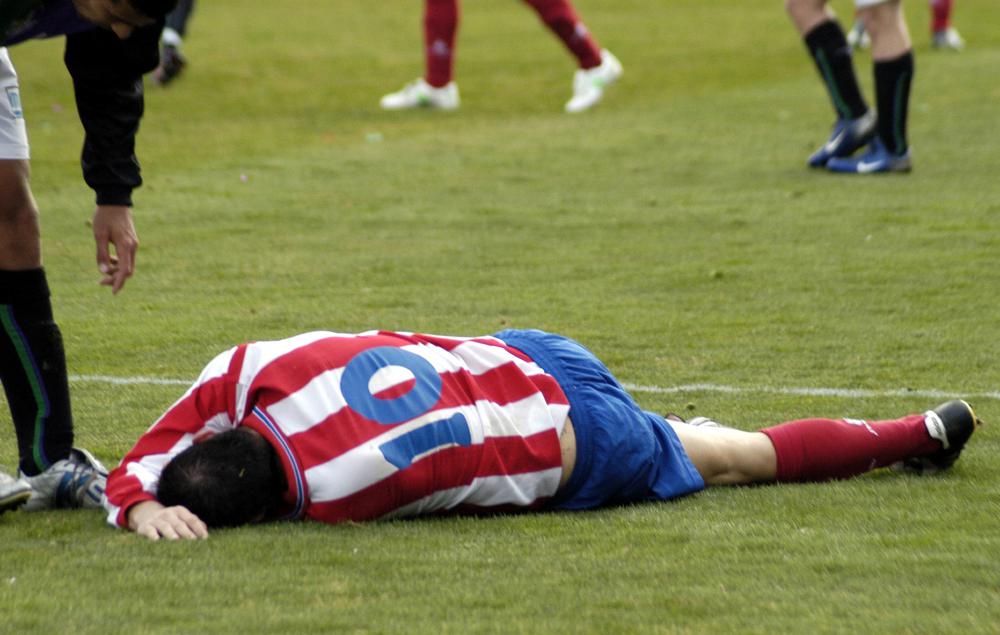At WiseGEEK, we're committed to delivering accurate, trustworthy information. Our expert-authored content is rigorously fact-checked and sourced from credible authorities. Discover how we uphold the highest standards in providing you with reliable knowledge.
What is Chronic Traumatic Encephalopathy?
Chronic traumatic encephalopathy (CTE), otherwise known as dementia pugilistica (DP), is a brain disease that primarily affects long-time boxers. This explains why chronic traumatic encephalopathy is also called boxer’s dementia, punch-drunk syndrome or punchy, traumatic boxer’s encephalopathy, chronic boxer’s encephalopathy, and chronic traumatic brain injury associated with boxing. The typical symptoms of this brain disorder include parkinsonism and dementia. It is theorized that the brain’s exposure to the repetitive blows in boxing predisposes a person to traumatic brain injury, which in turn could lead to chronic traumatic encephalopathy. People engaged in other sports that increase the risk for concussions, such as football, wrestling, hockey, and other contact sports, are also predisposed to getting CTE.
Initially described in 1928 among boxers, dementia pugilistica causes confusion, slowed movement, tremors, and speech problems. Dementia refers to the loss of cognitive function, while pugilistica is derived from the Latin word pugil, meaning boxer. In 1996, the more encompassing term “chronic traumatic encephalopathy” was used and became the preferred medical term for the disorder. Chronic traumatic encephalopathy is defined as a degenerative brain disease that results in symptoms similar to that of Alzheimer’s disease (AD). AD, however, has no established cause, whereas chronic traumatic encephalopathy has a temporal relationship with repeated brain trauma.

It is not yet fully known how chronic traumatic encephalopathy gives rise to its symptoms. In the process of repeated brain injury due to trauma, neurons may be lost and the brain parenchyma may become scarred. When the brain of people affected with this condition is examined, findings will most likely include the collection of an abnormal protein called tau, leading to a disruption of brain function. The brain of patients affected with dementia pugilistica shows neurofibrillary tangles similar to those of Alzheimer’s disease, but in different locations in the brain. Other findings through gross and histological studies include hydrocephalus or enlargement of the spaces called ventricles in the brain, diffuse axonal injury, and cerebellar damage.

Research shows that symptoms of this brain disorder start about 6 to 40 years after the start of a person’s boxing career. The average onset is approximately 16 years after the start of the boxing career. It is postulated that 15 to 20% of boxers may suffer from CTE. Typical symptoms include memory loss, attention and concentration impairment, disorientation, confusion, headaches, dizziness, and deafness. Other symptoms include lack of insight and poor judgment, slowed movements, impaired speech, vertigo, and tremors.
There is still no test available to diagnose chronic traumatic encephalopathy. The actual diagnosis of CTE is only given upon microscopic examination of the brain during an autopsy. People who are at increased risk for this condition include those who are engaged in a career in boxing, football, wrestling, soccer, and other contact sports that regularly impact on the brain. Other people at increased risk are domestic abuse victims, headbangers, and epileptics.
AS FEATURED ON:
AS FEATURED ON:












Discuss this Article
Post your comments